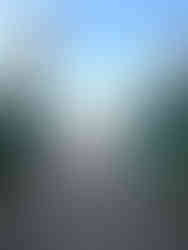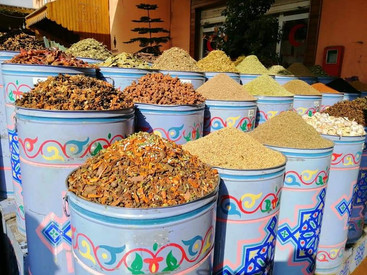A Pedacito Of Medinas in Morocco
- Ryle Eddings

- Mar 14, 2021
- 4 min read
Updated: Jan 9, 2022
The first Islamic community was founded by the Prophet Mohammad in a city called Medina. Because the Muslim tradition places great importance on an ordered and just city, similar designs began to spring up among Muslim communities throughout the world, based on Mohammad’s original design. The word “medina” means city or town in modern-day Arabic. When discussing Moroccan medinas, one refers to the original town or community located within the present-day city.
Most medinas in Morocco were originally fortified and protected from the outside. Today, these medinas are still separated from the more modern areas of the city by a large wall. While traveling around Morocco, my first stop when arriving in a new and unfamiliar city was always to that city’s medina.
A Moroccan medina’s common characteristics are small, narrow streets, homes that have been passed down through the family for generation upon generation, and shops. Shopping in the medina is a special experience. One can find fresh produce, handmade goods, antique furniture and jewelry, and various other knick-knacks. Haggling over the price is expected in the medina. Unless the price is listed on the item, never accept the first price offered by the shop owner.
However, just because Morocco’s medinas share certain similarities does not mean that they are all the same. Every city’s medina has its own personality. The reason I always chose to visit a city’s medina first is that I found that the medinas would reflect the city as a whole. It was also a lot of fun to compare and contrast the differences in each city.
Rabat, Morocco
The medina of Rabat was built in the 17th century and was the first of the medinas I visited. On the main street of Rue Souika were fast-food restaurants with ample outdoor seating, as well as shops selling oils, spices, fresh produce, and traditional leather goods. Also along this main market street were vendors selling freshly squeezed sugar-cane juice, pastries of every conceivable size and shape, and babouche (cooked snails).
Besides the bright blue and white paint, which is used to cover much of the walls of this medina, the thing I most enjoyed about Rabat’s medinas was its doors. At the entrance to every one of the hundreds of buildings within the walled city were incredibly ornately designed wooden doors. Each door is different from the one beside it, and all of them are beautiful and interesting.
The greatest difficulty of this specific medina is in the potential to get lost. Those who grew up in Rabat are familiar with all of the twists and turns inside the walled city. But if you are a tourist, plan to get a little lost if you wander away from the main market street. The tight alleyways all start to look similar after a while, and location apps don’t work very well inside the medina.
Tangier, Morocco
Having lived in Tangier for most of the year, I became most familiar with this city’s medina. If you are a movie buff, you will find this particular medina even more exciting. Movies such as Inception, The Bourne Ultimatum, and the James Bond movie Spectre were all filmed here. In fact, it is not uncommon to see a production crew set up in Tangier’s medina to film a new movie.

Personally, I came to know this medina as the place where I bought my groceries. To locals, the medina isn’t considered a tourist destination. It is still where the community meets to shop, meet with friends, and gossip about the day’s events. That’s what this place became for me. After a few months, I started to recognize and befriend some of the locals. I had my favorite produce shop and my favorite place to grab an afternoon coffee.
Marrakech, Morocco
If I had to describe Marrakech’s medina in one word, that word would be “crazy”! Unlike the medinas of other cities, Marrakech’s is definitely geared more towards tourists. Here, among the ubiquitous spice and leather shops, I saw snake charmers, performing monkeys, and traditional Berber musicians.
Marrakech is commonly known as “The Red City” as much of the buildings and walls inside the medina are painted a deep red color. My senses became overwhelmed at all the sights, sounds, and smells of the place. After sundown, Marrakech’s medina truly comes alive. The music gets louder, the lights burn brighter, and the tourists and locals all come out to see and be seen by one another. It is an exciting place, indeed.
I would suggest that you plan to spend an entire day in the medina of whichever Moroccan city you visit. If you are visiting multiple cities, plan to spend a day in each. Although they are similar in function, each medina is different in layout, architecture, color, and history. Each medina tells a story about that city and its people, and what better way is there to explore?
Want to know more? Are you interested in becoming a contributor for Pedacitos? We'd love to hear your stories! Send me a message and I will get back to you!

































































Comments